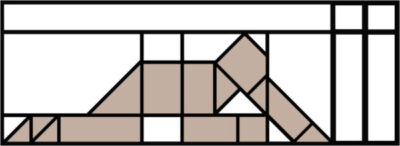Over at Psychology Today, Dale Kushner has a fascinating read on some of the research, linking joint hypermobility (a physical condition) with anxiety disorders.
In fact, there’s a rather stunning association.
According to one study, people who suffer from joint laxity have “eight to 16 times the incidence of anxiety not necessary linked to psychological factors.”
In other words, according to the study, it founds the association while controlling for common risk factors like genetics and environment.
So the very fact a person has joint hypermobility appears to predispose them to higher anxiety.
….anxiety was found in 70 percent of patients in comparison with a 20 percent incidence in the age- and gender-matched control group. In the follow-up reverse case-control study, joint hypermobility was found at 17 times the incidence in patients diagnosed with anxiety as compared with age- and gender-matched controls without an anxiety diagnosis.
Remarkable.
Why? Well, Kushner notes that a brand new study from the University of Sussex used fMRI scans to pinpoint an interaction between the neural centers that process threat and the center representing bodily state.
More specifically, according to the study, published in the BMJ.
HMS participants showed attenuated neural reactivity to emotional faces in specific frontal (inferior frontal gyrus, pre-supplementary motor area), midline (anterior mid and posterior cingulate cortices), and parietal (precuneus and supramarginal gyrus) regions. Notably, interaction between HMS and anxiety was expressed in reactivity of left amygdala (a region implicated in threat processing) and mid insula (primary interoceptive cortex) where activity was amplified in HMS patients with generalised anxiety disorder. Severity of hypermobility in anxious, compared to non-anxious, individuals correlated with activity within anterior insula (implicated as the neural substrate linking anxious feelings to physiological state). Amygdala-precuneus functional connectivity was stronger in HMS, compared to non-HMS, participants.
So there’s at least one potential explanation.
This is interesting for a number of reasons.
Joint hypermobility has been linked to so many other physical conditions (fatigue, bowel problems, bladder problems, joint pain, Ehlers-Danlos Syndrome), and nobody would argue that these are physical, medical symptoms.
What would a pastor say if you asked him, quietly, after service, “Hey, I’m having a lot of problems with my bladder. You think my faith is okay?”
You could ask about bowel incontinence, and his answer would probably be the same. Joint pain, too. Fatigue, as well. Then he’d get tired from the conversation and probably need to use the bathroom, too.
I’ve heard a lot of sermons over the years, and the only pastors I can even think of that might link bowel and bladder problems with spirituality would be a few groups of Pentecostals — certainly, not spiritual leaders from any kind of orthodox tradition.
And yet… so often, we’re told from leaders in the orthodox tradition that anxiety simply can’t be associated with our body. That it’s purely a spiritual condition.
Studies like this just add to the mountain of evidence that, sure, our environment and other factors may play a role in our anxiety, but it is primarily a condition of physical etiology — whether it be inflammation, genetics, gut bacteria, hypermobility, you name it — and, as such, no Christian should feel ashamed for being afflicted with this disease.
I’ve written extensively about the tragic misinterpretation of Christ’s passage on worry, and the Scriptures are full of saints who expressed deep anxiety and God treated them with compassion and not condemnation.
The important thing is – do we turn towards God in our anxiety or against him? That’s the battle.
If you’re anxious, depressed, or struggle with any aspect of mental health…
For readers from the United States….
Find a psychiatrist here.
Find a therapist here.
For readers, internationally, seek help from a local resource.
For salvation, Christ and Christ alone.
[Photo: Pexels, free photography].

